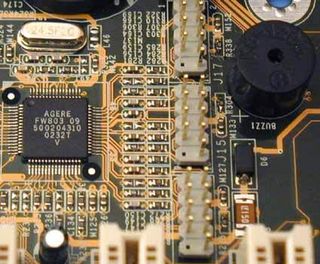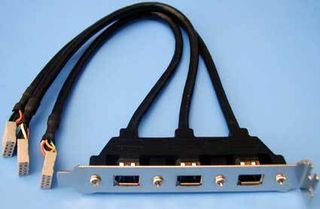The Economical Way to a Pentium 4 System: Five Motherboards with the SiS648 Chipset
DFI NS80-EA

Board Revision: ?
BIOS Version: October 29, 2002
The NS80-EA is similar to the AOpen board in what it provides. It also has a FireWire controller from Agere - but this one can activate three ports at once. On the other hand, instead of a full network controller, only a codec from the same manufacturer is available (Realtek RTL-8201BL), which is somewhat harder on the processor.
A total of six PCI slots and three DIMM sockets are available. When mounted with fast modules, the NS80-EA is subject to the restrictions of the chipset: no more than one DIMM at 400 MHz, two modules at 333 MHz or three at 266 MHz.
The AGP graphics card is, as with the competitors, held in the slot by a small locking device - a very useful detail when transporting the computer. The connection of four USB 2.0 ports is also a plus, only if ports 5 and 6 need to be used does an additional connecting board have to be purchased. In return, an adapter module for using the three FireWire connections is included in the package.
In the benchmarks, the DFI board is only slightly in the lead. The most important reason for this is the fact that the test processor is run precisely within the specifications (2,266 MHz) while the competition resorts to illegitimate means and is therefore 5-11 MHz above the target value.

Good to see: the FireWire codec from Agere (FW803) with its three ports (center).
Stay on the Cutting Edge
Join the experts who read Tom's Hardware for the inside track on enthusiast PC tech news — and have for over 25 years. We'll send breaking news and in-depth reviews of CPUs, GPUs, AI, maker hardware and more straight to your inbox.

The three FireWire ports may be used simultaneously with the help of this adapter board.

Our test copy included an 80-wire IDE cable, a floppy cable and a driver CD.

First violin? The packaging of the NS80-EA is elegant, if a little unusual for the sector.
